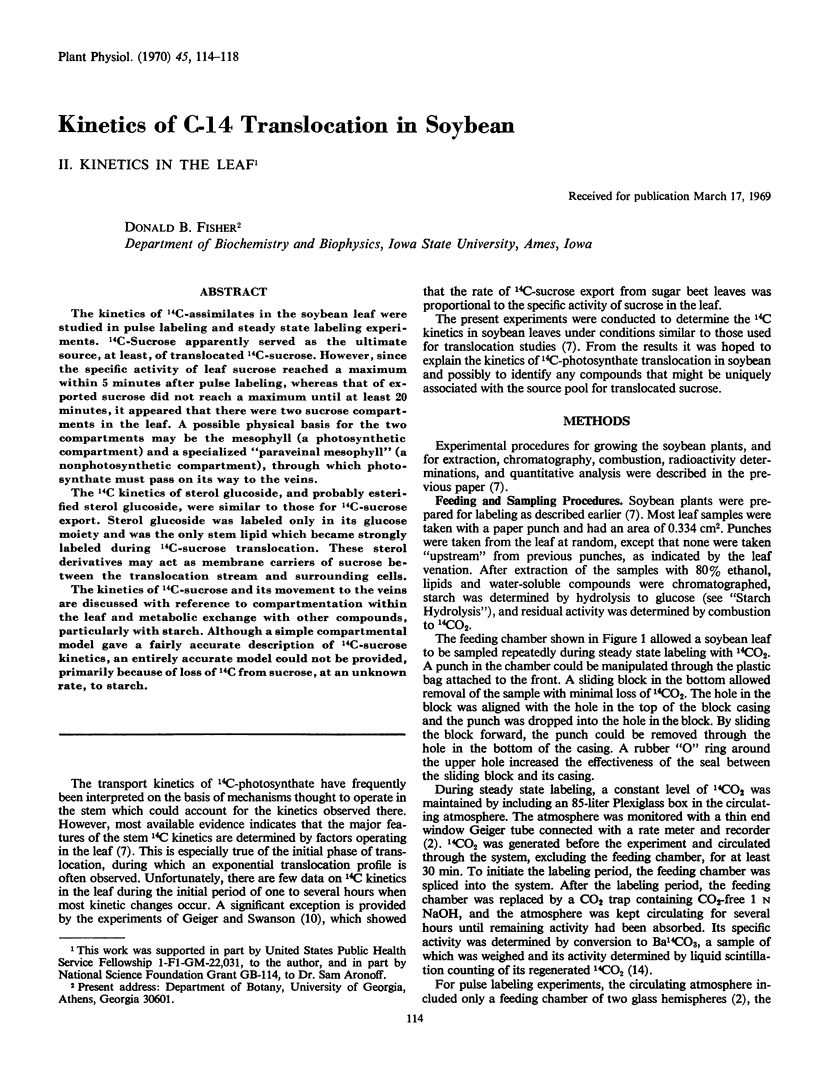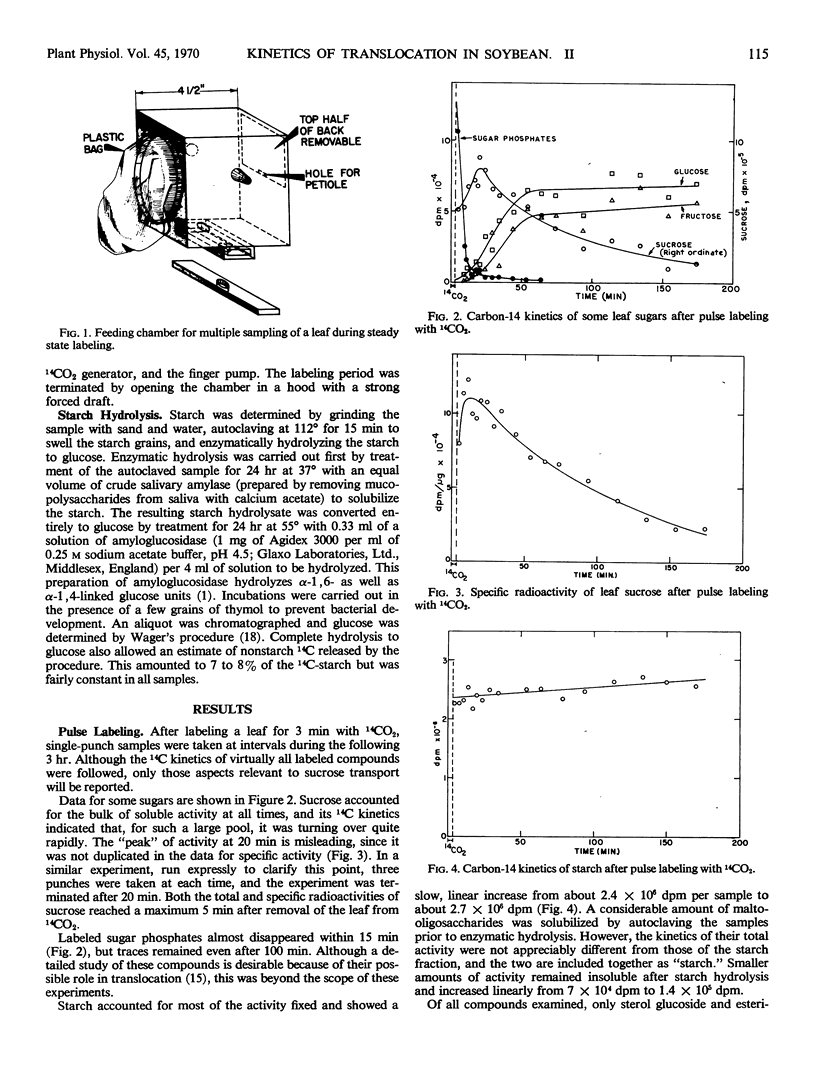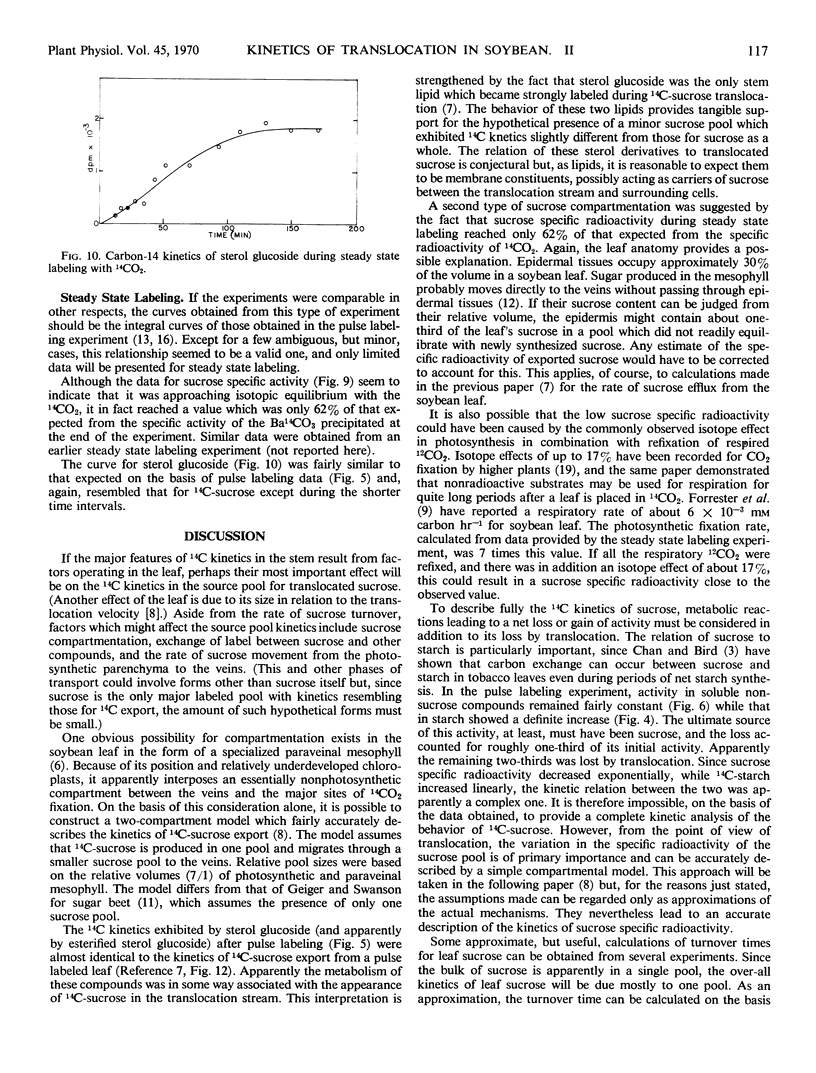Abstract
The kinetics of 14C-assimilates in the soybean leaf were studied in pulse labeling and steady state labeling experiments. 14C-Sucrose apparently served as the ultimate source, at least, of translocated 14C-sucrose. However, since the specific activity of leaf sucrose reached a maximum within 5 minutes after pulse labeling, whereas that of exported sucrose did not reach a maximum until at least 20 minutes, it appeared that there were two sucrose compartments in the leaf. A possible physical basis for the two compartments may be the mesophyll (a photosynthetic compartment) and a specialized “paraveinal mesophyll” (a nonphotosynthetic compartment), through which photosynthate must pass on its way to the veins.
The 14C kinetics of sterol glucoside, and probably esterified sterol glucoside, were similar to those for 14C-sucrose export. Sterol glucoside was labeled only in its glucose moiety and was the only stem lipid which became strongly labeled during 14C-sucrose translocation. These sterol derivatives may act as membrane carriers of sucrose between the translocation stream and surrounding cells.
The kinetics of 14C-sucrose and its movement to the veins are discussed with reference to compartmentation within the leaf and metabolic exchange with other compounds, particularly with starch. Although a simple compartmental model gave a fairly accurate description of 14C-sucrose kinetics, an entirely accurate model could not be provided, primarily because of loss of 14C from sucrose, at an unknown rate, to starch.
Full text
PDF




Selected References
These references are in PubMed. This may not be the complete list of references from this article.
- DAWSON R. M. A hydrolytic procedure for the identification and estimation of individual phospholipids in biological samples. Biochem J. 1960 Apr;75:45–53. doi: 10.1042/bj0750045. [DOI] [PMC free article] [PubMed] [Google Scholar]
- Fisher D. B. Kinetics of C-14 Translocation in Soybean: III. Theoretical Considerations. Plant Physiol. 1970 Feb;45(2):119–125. doi: 10.1104/pp.45.2.119. [DOI] [PMC free article] [PubMed] [Google Scholar]
- Fisher D. B. Kinetics of C-14 translocation in soybean: I. Kinetics in the stem. Plant Physiol. 1970 Feb;45(2):107–113. doi: 10.1104/pp.45.2.107. [DOI] [PMC free article] [PubMed] [Google Scholar]
- Forrester M. L., Krotkov G., Nelson C. D. Effect of oxygen on photosynthesis, photorespiration and respiration in detached leaves. I. Soybean. Plant Physiol. 1966 Mar;41(3):422–427. doi: 10.1104/pp.41.3.422. [DOI] [PMC free article] [PubMed] [Google Scholar]
- Geiger D. R., Swanson C. A. Evaluation of Selected Parameters in a Sugar Beet Translocation System. Plant Physiol. 1965 Sep;40(5):942–947. doi: 10.1104/pp.40.5.942. [DOI] [PMC free article] [PubMed] [Google Scholar]
- Geiger D. R., Swanson C. A. Sucrose Translocation in the Sugar Beet. Plant Physiol. 1965 Jul;40(4):685–690. doi: 10.1104/pp.40.4.685. [DOI] [PMC free article] [PubMed] [Google Scholar]
- VERNON L. P., ARONOFF S. Metabolism of soybean leaves. IV. Translocation from soybean leaves. Arch Biochem Biophys. 1952 Apr;36(2):383–398. doi: 10.1016/0003-9861(52)90424-4. [DOI] [PubMed] [Google Scholar]


